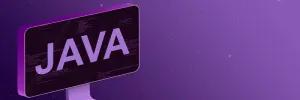Introduction
One of the most widely used programming languages in the world, Java is renowned for its adaptability, scalability, and variety of uses. Java developers frequently make use of frameworks to improve the development process and streamline difficult jobs. In this post, we'll examine the idea of Java frameworks, talk about some of the most well-liked Java frameworks, and analyze their benefits. As part of our thorough analysis of the Java framework ecosystem, we will also look into the differences between frameworks and libraries.
Overview
Frameworks are essential to the creation of software because they offer pre-made structures and libraries that help programmers create reliable, scalable, and effective programs. These frameworks provide a base for developers to build on, easing the process and letting them concentrate on application-specific logic rather than having to create it from scratch.
What is a Framework in Java?
You might be wondering what is a framework in Java with example, right? Here it is! A framework in Java is a pre-written, reusable codebase that offers a structured environment for creating applications. It comprises a selection of tools, conventions, and libraries that make it easier for programmers to create software. Java frameworks for web development include built-in components and procedures that may be used to handle frequent activities like managing sessions, interacting with databases, and processing requests. Developers may hasten the development process, lessen code duplication, and guarantee better code structure by using frameworks.v
What is a Framework?
An environment that is organized and provides reusable parts, libraries, and tools to speed up development is known as a framework. To encourage uniformity and standardization across projects, frameworks give developers a set of rules, norms, and principles to adhere to. They remove low-level specifics so that developers may concentrate on high-level application logic. Frameworks also promote maintainability, modular design, and code reuse.
Popular Java Frameworks
Here is a list of popular Java frameworks:
The most extensively used Java framework is likely Spring, which is recognized for its many features and adaptability. It complies with the Inversion of Control (IoC) and Dependency Injection (DI) tenets, allowing programmers to build highly tested, loosely linked systems. Spring caters to all facets of application development with a large selection of modules, such as Spring Boot, Spring MVC, and Spring Data. It is the go-to option for enterprise-level Java development due to its extensive ecosystem and vibrant community support.
Advantages of Spring:
- Simplified application configuration through dependency injection
- Modular design and ease of integration with other frameworks
- Excellent support for database access and transaction management
- Enhanced security features through Spring Security module
- Seamless integration with various application servers and databases
The object-relational mapping (ORM) technology called Hibernate makes it easier for Java programs to communicate with databases. By removing the difficulties of SQL queries and data management, it offers a simple and effective solution to map Java objects to relational database tables. Hibernate supports a number of database management systems, enabling programmers to build code that is database-independent. Lazy loading, caching, and transaction management are some of its capabilities, which make it a popular option for database-driven applications.
Advantages of Hibernate:
- Simplified database interactions through object-relational mapping
- Database independence, supporting multiple database vendors
- Automatic SQL generation and optimization
- Caching mechanisms for improved performance
- Support for transparent persistence and lazy loading
Grails is a dynamic, Groovy-based framework for building online applications that makes use of the strengths of the Spring framework and the Hibernate ORM. It adheres to the notion of convention over configuration, resulting in a more simplified development process. A number of productivity-boosting technologies are available in Grails, such as scaffolding, which automatically builds the foundational application code. Additionally, it supports the Groovy programming language, whose clear and expressive syntax speeds up and improves the enjoyment of work.
Advantages of Grails:
- Rapid application development through convention-over-configuration
- Seamless integration with Spring and Hibernate
- Powerful scaffolding for automatic code generation
- Support for plugins to extend functionality
- Groovy language integration for concise and expressive code
A reactive web application framework called Play places a strong emphasis on scalability and performance. Its event-driven, non-blocking architecture makes it appropriate for real-time and high-traffic applications. Play offers a simple programming approach and supports the Java and Scala languages. It has capabilities like quick reloading, which enables programmers to view changes to the code right away without having to deploy the application again. Play is a great option for creating flexible and scalable web apps due to its lightweight and modular nature.
Advantages of Play:
- Reactive and non-blocking architecture for high-performance applications
- Hot reloading for instant code changes during development
- Support for both Java and Scala languages
- Lightweight and modular design
- Built-in support for RESTful APIs and websockets
A component-based web framework called JavaServer Faces makes it easier to create user interfaces for Java online applications. In addition to a wide range of tools and frameworks, it offers a collection of reusable UI components. JSF divides the display layer from the application logic using the Model-View-Controller (MVC) design. Its capabilities, which include event handling, form validation, and server-side state management, make it a popular option for enterprise-level web development.
Advantages of JavaServer Faces:
- Component-based architecture for modular and reusable UI development
- Robust server-side state management
- Built-in support for form validation and event handling
- Wide range of component libraries for enhanced UI functionality
- Easy integration with other Java EE technologies
With the help of the Google Web Toolkit, programmers may use Java to create high-performance browser-based apps. It enables programmers to create Java code, which is subsequently optimized JavaScript for use in web browsers. For the development of adaptive and cross-browser compatible apps, GWT offers a collection of frameworks and tools. It is a popular option for web application development since it also has capabilities like delayed binding, internationalization support, and client-server communication.
Advantages of Google Web Toolkit:
- Write browser-based applications using Java language
- Automatic generation of optimized JavaScript code
- Cross-browser compatibility and performance optimization
- Support for deferred binding and internationalization
- Simplified client-server communication
Quarkus is a cutting-edge, cloud-native framework made for creating Java applications that are ready for deployment using containers. Because of its compact size, quick startup time, and minimal memory use, it is perfect for situations with limited resources. Developers may create scalable and durable apps with Quarkus since it supports both reactive and imperative programming styles. With well-known Java frameworks for backend like Hibernate, Spring, and Apache Kafka, it also offers smooth interoperability.
Advantages of Quarkus:
- Optimized for cloud-native and container-based deployments
- Fast startup time and low memory consumption
- Support for reactive and imperative programming models
- Seamless integration with popular Java frameworks
- Developer-friendly features like live coding and hot reloading
Advantages of Java Frameworks
The utilization of Java frameworks spring boot brings several advantages to the development process. Some key advantages are:
- Increased productivity: Frameworks provide reusable components and automated tools that speed up development, reducing time and effort required to build applications.
- Coding is made easier because of frameworks' pre-made structures, patterns, and libraries, which eliminate the need for boilerplate and repeated code.
- Enhanced scaling: Frameworks frequently offer solutions for scaling issues such load balancing, caching, and distributed computing.
- Frameworks impose best practices and standards, which improves the structure and maintainability of code.
- Community support: Popular frameworks have large and active communities, providing access to documentation, tutorials, forums, and libraries, which facilitate troubleshooting and knowledge sharing.
Examples of Frameworks in Java
Other well-known Java frameworks include Struts, JavaFX, Vaadin, Apache Wicket, and Dropwizard in addition to the ones just mentioned. Each framework caters to various needs for application development with its own special features and advantages.
Framework vs. Library
Although frameworks and libraries have certain commonalities, they also differ significantly. A library is a group of ready-made code modules that programmers may utilize to carry out particular tasks. Developers have control over when and how to use libraries, as they can be selectively included in an application. In contrast, a framework provides a complete structure and set of rules that guide the development process. Within the framework's constraints and in accordance with its standards and principles, developers create their applications.
Conclusion
API Java frameworks list have completely changed how programmers create apps by giving them an organized and effective environment to work in. As a consequence, software development cycles are shorter and of greater quality. They let engineers concentrate on application logic rather than tedious and repeated chores. Each framework in the Java framework ecosystem caters to a particular set of application needs and development approaches. By utilizing Java frameworks, developers may take advantage of tried-and-true best practices, increase productivity, and create reliable and scalable applications.
FAQs
1. Which Java framework should I choose for my project?
The decision of a Java framework relies upon different elements, for example, project prerequisites, versatility needs, improvement group mastery, and local area support. It is prescribed to assess various systems in light of these variables and select the one that adjusts best to your undertaking objectives.
2. Are Java frameworks only for web development?
Although there are many Java frameworks, their use is not just restricted to web development. Applications for the web, mobile, desktop, and business may all be developed using Java frameworks.
3. Can I combine different Java frameworks into one project?
Multiple Java frameworks may be used in a single project, yes. However, it is crucial to take into account the integration difficulties and guarantee framework compatibility.
4. Are Java frameworks suitable for small-scale projects?
Java frameworks may be applied to both modest and substantial projects. However, using lightweight frameworks or libraries that offer specialized features without the expense of a full-fledged framework may be more effective for small-scale applications with low complexity.
5. Can I create a custom Java framework?
If you have certain needs that existing frameworks do not address, it is feasible to create your own Java framework. But creating a framework from scratch is a major job that calls for a thorough knowledge of software architecture and design concepts. Unless there is a compelling need for a new solution, it is typically more practicable to utilize existing frameworks.
Take the Free Quiz on Java
Answer quick questions and assess your Java knowledge



-7f4b4f34e09d42bfa73b58f4a230cffa.webp&w=128&q=75)
-7f4b4f34e09d42bfa73b58f4a230cffa.webp&w=128&q=75)


























-ae8d039bbd2a41318308f8d26b52ac8f.svg)

-9cd0a42cab014b9e8d6d4c4ba3f27ab1.webp&w=3840&q=75)





